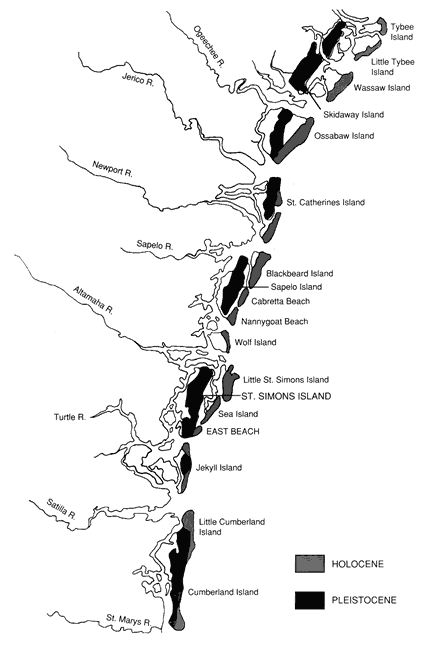

Simons Island, as well as the mainland city of Historic Brunswick, these barrier islands have a lot to offer. This field guide serves as the static, print companion to an online virtual field trip ( ). Comprising Jekyll Island, Little St.Simons Island, Sea Island, and St. More than 1,650 islands called marsh hammocks provide a secluded inland sanctuary for wildlife. A campers fantasy, place for family day trips and secluded retreat for See. Admired around the world for its stunning beauty and rich biological diversity, the Georgia coast encompasses a lacework of barrier islands, mud flats, tidal creeks, blackwater rivers, freshwater wetlands, and 378,000 acres of salt marsh. The field trip provides evidence of the Pleistocene-age island cores, the natural southward migration of the mobile Holocene-age sandy shorelines, and the impacts of storm erosion and hard structures built to combat that erosion. Wassaw Island is considered the most unspoiled of Georgias barrier islands and is a designated National Wildlife Refuge. Georgias largest and southernmost barrier island is an unspoiled paradise. This field guide presents evidence of island formation, modern ecologic function, and likely future changes for three island groups: (1) Blackbeard, Cabretta, and Sapelo Islands (2) Sea Island and St. Today, many of the barriers are transgressive, and hard structures such as revetments and groins are becoming increasingly more common to stabilize shorelines along the four developed islands. As a result, inlets are numerous and the back-barrier environment hosts nearly 400,000 acres of salt marsh. Positioned within the head of the funnel-shaped South Atlantic Bight, tidal ranges here commonly reach ~2–3 m. Many of the islands, particularly those along the southern Georgia coast, consist of Pleistocene cores surrounded by mobile deposits that attached during the Holocene sea-level transgression.
Barrier islands georgia series#
Venture out of that paradise and you will discover a world of other activities custom-made for loving life in the Golden Isles.Georgia’s coastline is composed of a series of short, wide, mixed-energy (tide-dominated) barrier islands, each backed by extensive marsh, topped with mobile dunes, and flanked by deep inlets. The weather makes living in the area's exclusive communities a paradise. Brown shrimp have a short season of July and August. Yet there are 15 Georgia barrier islands, from Tybee Island off the coast of Savannah, to Cumberland Island, just north of Jacksonville, Florida. White shrimp are generally harvested at about 21 to 25 per pound, and are in season from January through the end of June. Simons, Sea Island, Little St Simons, Wolf, Sapelo, St. Shrimp are measured according to count per pound, and at 10 to 15 per pound, brown shrimp are by far the largest shrimp harvested in Georgia. Today the Golden Isles remains a popular destination for visitors and new residents who are attracted by the region’s temperate weather, year-round access to outdoor activities and the same relaxed lifestyle enjoyed by the earliest residents.Īnnual average temperatures are just less than 70 degrees. The Georgia Islands begin with Cumberland Island and also include Little Cumberland, Jekyll, St. Simons Island and the port city of Brunswick – emerged as the coastal playground for wealthy industrialists and New World elite, as well as families who appreciated the barrier islands’ natural beauty. Sapelo is a state-managed barrier island, the fourth largest in the chain of coastal Georgia islands between the Savannah and St. Simons Island, Sea Island, Jekyll Island, Little St. Since being settled in the early 1700s, the 100-mile Georgia coastline was some of the most fought after, sought after real estate in the infancy of the United States.īy the time the Civil War was winding down, the Golden Isles - St. Simons Island and the port city of Brunswick.


 0 kommentar(er)
0 kommentar(er)
